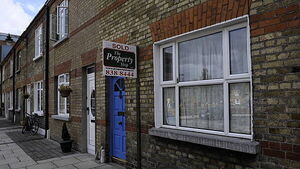House prices in Dublin rise at slower rate than the rest of the country

Ottoline Spearman
Inflation in the property market has begun to ease, as available housing stock to buy increases, according to a new report by property website Daft.ie.
However, it still remains well above inflation in the wider economy, which is attributed to a long-standing shortage in supply.
On September 1st, 11,925 second-hand homes were for sale nationwide, up marginally (1 per cent) on the same date a year previously. However, availability is still less than half the 2015-2019 average.
The lowest inflation nationally for house prices is in Dublin, where prices are up 4.5 per cent since last year. Price increases in Munster (up 5 per cent annually) and across the four other major cities (up 5.8 per cent on average) were also below the national average, which was dragged up by substantially larger increases in Leinster (outside Dublin; up 7.2 per cent annually) and Connacht-Ulster (outside Galway; up 8.7 per cent on average).
Nationally, the average price of a three-bed semi-detached home in the third quarter was just over €421,000. Listed prices are now, on average, 5.9 per cent higher than a year ago. They are also 39 per cent above their pre-Covid levels and just 10 per cent below their Celtic Tiger peak.
In Dublin, the average price of a three-bedroom semi-detached house in the third quarter of 2025 was €557,000, up 4 per cent on a year ago. Across the country, prices rose by 0.8 per cent on average during the quarter.

The report's author, Prof Ronan Lyons from Trinity College, said: "Over the last two decades, the housing market experienced a wide variety of conditions. Nonetheless, for over half that span, the predominant theme has been a shortage of supply.
"More construction – and a healthier second-hand segment – are the key ingredients needed if the story of the Irish housing market over the years to come is to be a happier one.”
The economist also said that since Covid-19, Dublin has seen prices rising at a slower rate than elsewhere. He attributes this to new homes, especially in Dublin, which are keeping up activity levels, as the second-hand market falters.
Higher interest rates have also had a knock-on effect on the second-hand market, he said, making the new-homes segment more important.
The Daft.ie report includes new methods applied to transaction prices, based on the Property Price Register, and listed prices based on the Daft.ie database; as well as stock available to buy, the number of transactions, market heat and a range of other metrics.





